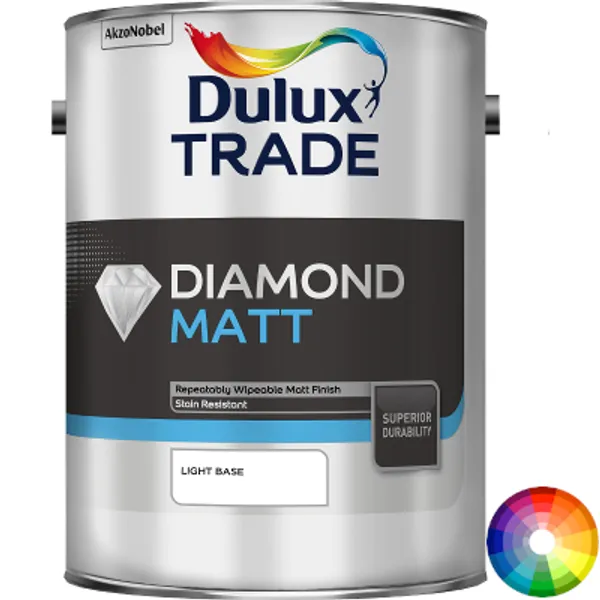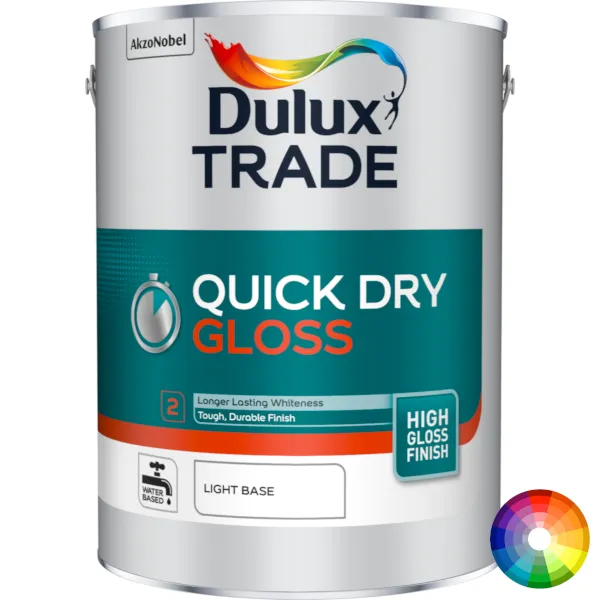Solved: Can You Paint Wood With Emulsion?
Here at Painters World we regularly receive questions from homeowners regarding whether a certain paint can be used on a surface. One of the most common areas of confusion is regarding interior wall emulsions and whether they can be used on wood. That is why our experts have to put together this guide, answering this question and more, so you can complete your DIY project to the highest possible standard.

What Is Emulsion Paint?
To answer this question, it is first important to establish what we are talking about. When referring to an emulsion paint, many DIY'ers are talking about paint for interior walls & ceilings. These emulsions are water-based with vinyl or acrylic added to them to give added durability. They come in a range of finishes, such as eggshell, silk & matt, with matt paints being the most popular finish.
Can You Paint Wood With Emulsion?
While emulsions are generally designed for interior walls, some products can be used on both interior walls & on wood. We would not recommend using a standard vinyl matt emulsion on interior wood as they do not have the required durability to be able to withstand the knocks that interior wooden trim such as doors and skirting boards can take.
Emulsions such as water-based eggshells are often used on interior trim as the oil-based version of eggshell, as with all oil-based paints, is slow drying and can yellow over time. This means that many people will use a water-based eggshell emulsion instead if they want an eggshell finish.
It has also become extremely popular to use the same colour of paint on interior walls and interior trim, creating a uniform finish across the room. This is contrary to traditional decorating, that consists of a white satin or gloss finish on trim and a coloured emulsion on the walls. As technology in paint has changed and home decor trends have evolved, there is a much greater flexibility on what paint you opt for.
One of the reasons people want to use an emulsion on wood is that they want a modern, flat finish that a matt paint offers. If this is what you plan to do, do not use a vinyl matt emulsion. There are harder wearing matt emulsion in the form of acrylic matt emulsions that offer a tough, flat matt finish. However, matt emulsions, with their low sheen levels do not have enough durability for woodwork, which is why acrylic matt emulsions are designed for interior walls & ceilings.
Things To Consider
As with any decorating project, there are advantages and disadvantages to using a particular paint. When using emulsion paint on wood, it is important to consider:
- Emulsion paint is only suitable for interior woodwork. Exterior wooden surfaces require the durability and weather resistance that exterior wood treatment can offer.
- Preparing the surface when painting wood is crucial.
- Interior wood treatments that are usually gloss and satin finishes offer extra durability due to their sheen levels. With a water-based emulsion paint in eggshell, silk or matt finishes, they will have less durability than traditional wood finishes, and therefore may be more prone to wear in high-traffic areas such as hallways. This is why it is important to check what emulsion you are planning to use to see if it is recommended for use on wood. Generally, using durable matt and eggshell finishes is your best bet.
The Best Emulsions For Wood
There are a number of emulsions that are perfect for use on wood. These are split into the finish they offer, whether matt, eggshell, silk, satin or gloss. These all vary in levels of sheen, which is the amount of list they reflect. The more sheen they have, the more light they reflect. Matt emulsions have the least amount of sheen, which is why they offer a flat, modern finish, while eggshell has slightly more sheen, followed by satin that has a mid-sheen finish, and then finally gloss with the most sheen. Satin and gloss and generally reserved for interior wood, as they offer too much sheen for interior walls, in many peoples opinions. Here are our experts picks for the best paints to use on interior wood.
The Best Eggshell Emulsion For Wood
Dulux Diamond Eggshell is a hardwearing water-based eggshell finish that uses Dulux Trade's diamond technology to make it five times tougher and 43% more scuff resistant than the standard Dulux Eggshell. This is exactly why using a durable emulsion is crucial when painting interior wood, as a standard emulsion simply isn't going to offer the same longevity, and for the difference in cost, the durable emulsion offers much before value for money.
With matt emulsions not offering the required level of durability to be used on interior woodwork, an eggshell finish is the lowest sheen level that you can achieve, which is why it is a popular choice for many homeowners.
The Best Satin Emulsion For Wood
Not generally considered an emulsion, satin paints are readily available for interior wood, offering a traditional finish that is more recognisable in the UK than a matt finish. Again from Dulux, Dulux Trade Diamond Satinwood is a water-based formulation that offers all of the benefits that come with a water-based paint, but with exceptional durability. When it comes to achieving a beautiful, satin finish that lasts, look no further!
The Best Gloss Emulsion For Wood
Again, while gloss paints are not considered an emulsion as they are very rarely used on interior walls, achieving a highly reflective gloss finish may be your aim. If so then Dulux Trade Quick Dry Gloss is a great option for a water-based, high gloss system that provides a durable finish. The reason this is called a quick dry gloss is due to it being water-based, with gloss finishes often coming in oil-based form, which can cause yellowing and long drying times as we have mentioned previously.
Frequently Asked Questions
Q. Can Emulsion Be Used As Undercoat?
Yes, you can use water-based emulsions as an undercoat and then overcoat using a water-based gloss or satin finish. While this would not be done by a professional decorator due to it leaving a less impressive finish, if this is all you have at your disposal, it will be perfectly fine.
Q. How Can You Paint Over Emulsion With Gloss?
If you have previously had an emulsion paint used on woodwork and would like to remove it, the best way to do this is by sanding this down with a P80 grit. This will create a key for the gloss to adhere. Just make sure before you paint the topcoat of gloss on that it is completely free of dust, as this will prevent the paint from adhering.
We hope this has answered any questions you may have had regarding using emulsion paint on wood. If you require any more help, just send an email to the team at hello@paintersworld.co.uk. At Painters World we have a wide range of paints & decorating supplies available, so no matter the job, we've got the right tools for you.



Sign up now and be the first to know about exclusive offers, product updates, and announcements.




